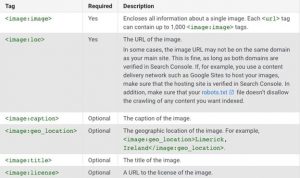Today, both global companies and local small businesses want to promote products and services around the world. Making your website global can help you extend your reach to an international audience.
In a nutshell, international SEO is the process of adjusting your site so that search engines can understand which countries you want to reach and which languages you want to use to speak to your audience. For websites with pages that are similar in meaning but intended for different languages, hreflang attributes are the best solution (a hreflang is a tag unique to Google; Bing only uses the “content-language” meta tag). This element allows a webpage to specify the language of the linked document.
However, this is easier said than done. Implementing the hreflang attribute correctly on a multilingual website can be a daunting challenge. Even though Google provides instructions for implementing the attribute, if you look at how it is implemented on many websites, you will see that these instructions are often misunderstood by SEO specialists and webmasters. As a result, Google cannot understand which of your pages to index and display for a particular geographical region.
The SEMrush team conducted a new study, analyzing 20,000 websites that have multiple language versions with the help of SEMrush Site Audit. The tool checked these sites according to approximately 50 parameters and offered 13 checks for hreflang implementation. The study showed that 75 percent of websites have at least one hreflang implementation mistake that is spoiling the page’s chances of being correctly served to the relevant audience.
During our research, the SEMrush team found out that the average multilingual site has around seven language versions. The following are the most common hreflang implementation issues that the study revealed.
Issues with hreflang values — 15%
The hreflang attribute should contain a value of the language that can also be combined with a region. The language attribute needs to be in ISO 639-1 format, while the region should be in ISO 3166-1 Alpha 2 format. You must be absolutely sure that you use the correct language and country code when adding hreflang codes to your webpage. Otherwise, Google won’t be able to define the language and region you’re targeting. Fifteen percent of the analyzed multilingual websites have issues with hreflang values, such as:
- Unknown language code
- Unknown country code
- Underscores used
-
Only country code is used
- Invalid order of hreflang values

Hreflang conflicts within a page source code — 58%
Our research showed that hreflang conflicts in the source code of a webpage are the most common issues on multilingual sites — 58 percent of them have the following issues:
- No self-referencing hreflang tag
- Conflicting hreflang and rel=canonical tags
- More than one URL is specified for the same hreflang value
You need to pay careful attention to these issues to make sure you don’t confuse Google, as the search engine can index your webpages correctly.

Issues with incorrect hreflang links — 37%
It’s important to point Google in the right direction when indexing all of all your webpages; otherwise, it will ignore your webpages or index them improperly. To avoid these problems, you need to regularly monitor your status codes and try to avoid unnecessary redirects and dead ends. Thirty-seven percent of multilingual websites have issues with incorrect hreflang links. Until you fix these errors, your site will not benefit from additional language or country targeting.
- Hreflang link points to redirected page
- Broken hreflang link
- Relative links

Potentially missing hreflangs — 32%
During our research, if a language version that isn’t listed on a specific page was detected, it was considered a potential issue. Obviously, some hreflangs may not be specified on webpages on purpose. Nevertheless, it’s better to check whether your pages have required hreflangs. Our research showed that about 32 percent of multilingual websites have different sets of languages for different pages.
Hreflang language mismatch — 21%
A hreflang language mismatch means that a language specified in a hreflang attribute doesn’t match the actual language that you use on your webpage. If you use the wrong language code or make a typo, you’ll send Google the wrong signal. As a result, the search engine will interpret your hreflang attribute improperly. Our study showed that on 21 percent of the websites, the language that is specified in a hreflang attribute differs from the detected language.
The hreflang attribute helps website owners increase their visibility in many countries that speak languages. However, without proper hreflang implementation, Google will not be able to show the correct pages of your site to the correct users. Avoiding the aforementioned mistakes will enable you to improve your international SEO campaign and effectively expand your business globally.

Images by SEMrush
(77)






